Orchestral Works:
Signs of Life II- for string orchestra
Signs of Life- for string orchestra
Peace Overture- for orchestra
Gabriel– concert overture for orchestra
Don’t Tread on Me– for string orchestra
Mozart Escapes– settings of Mozart for orchestra
Ultra-Americana– two pieces for orchestra
Freedom Fanfare– for orchestra
Revolutionary Action– for orchestra
Concertos:
Voice of the Wood– concerto for cello quartet and orchestra
The Glory and the Grandeur– concerto for percussion trio and orchestra
Harmonic Rhythm– concerto for timpani and orchestra
The Upward Stream– concerto for tenor saxophone and orchestra
Educational & Family Pieces:
The Thrill of the Orchestra– demonstrates the instruments of the orchestra with narration
The Thrill Beyond Words (instrumental)
Playing with Style– demonstration piece for narrator and orchestra
Jack and Jill at Bunker Hill– a story from the founding of the USA for narrator and orchestra
Where’s Red Robin?– story piece with narrator and orchestra
Concerto for Cello Quartet and Orchestra
or
Arrangement for Cello Quartet and Piano
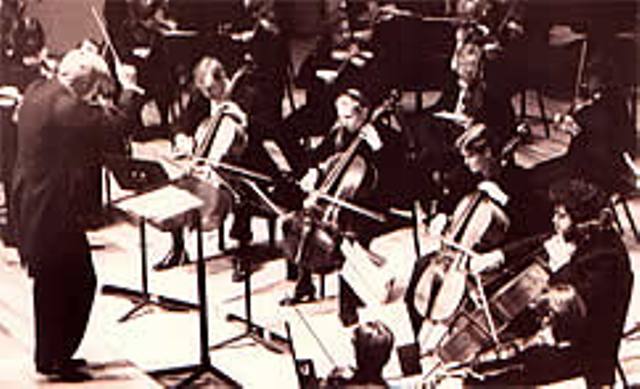
conducted by Peter McCopplin
I. Prelude
II. Fantasia
Composed for the innovative medium of cello quartet and orchestra. Voice of the Wood was premiered by the Charlotte Symphony to standing and shouting applause. Suitable for performance by an orchestra’s own cellists, it can also be performed by a guest artists cello quartet.
“classic Peck, tonal and accessible, and driven by syncopation . . . especially winning was the rich collective voice of the four soloists . . . the audience responded with an extended ovation”
Charlotte Observer
“very positive response . . . the audience was on its feet just moments after the music ended”
National Public Radio: Performance Today
duration: 21′
(1999)
3(3rd db. picc.)/2+E.h./2+b.cl./2+cbn. 4/3/3/1
timp. 3 perc. piano harp
violin I & II violas basses
solo cello quartet
To purchase this contact:
Eble Music Co. (319) 338-0313 www.eble.com
demonstration piece for orchestra with narration
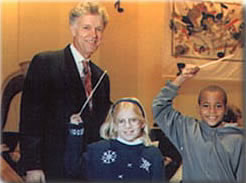
With wit and fun, this popular “concerto for conductor” uses engaging music and narration to illustrate the conductor’s role and the basics of crescendo, diminuendo, accelerando, ritardando, legato and staccato. This work is also designed to permit narration by the conductor. Playing With Style works naturally on any program dealing with the role of the conductor or the elements of music.
Russell has composed a variety of narrated pieces appropriate for a broad range of ages. These works have been performed throughout the United States, Canada, and in Europe and Asia.
Commissioned by a consortium of North Carolina orchestras, this work has been performed by the Rochester Philharmonic, Indianapolis Symphony, and dozens of other orchestras across the country.
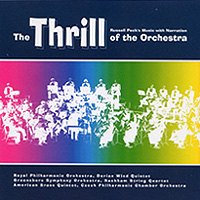
duration: 10′
(1991)
2/2/2/2
4/2/3/1
timp. 2 perc. strings
narrator (or conductor narration)
A
chamber orchestra version (using different score
& parts) has instrumentation as follows:
2/2/2/2 2/2/1/1
timp. 1 perc. (or timp./perc. 1
player) strings
narrator (or conductor narration)
Russell Peck, narrator; Greensboro Symphony Orchestra
Stuart Malina, conductor
nature story piece for narrator and orchestra
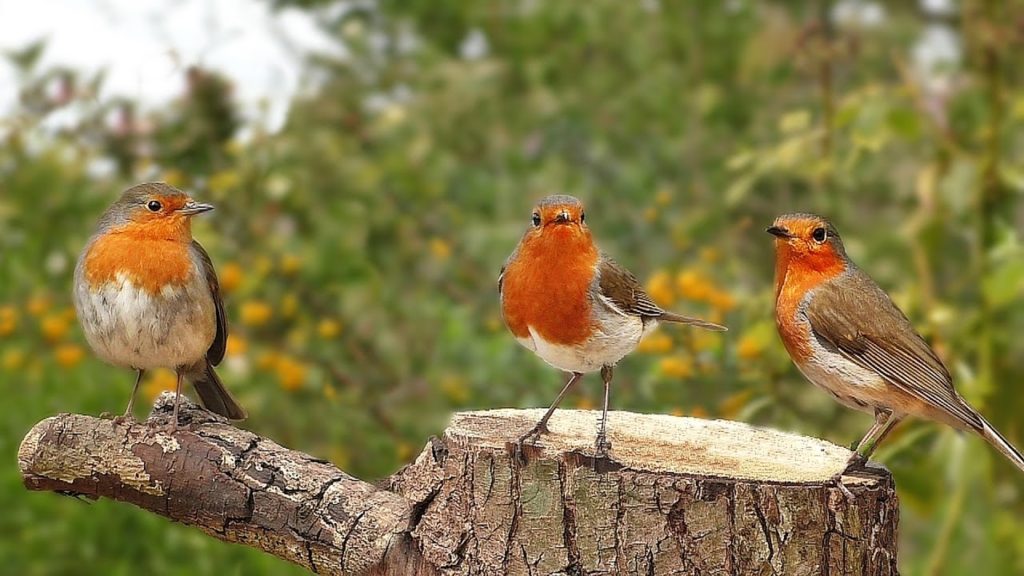
Illustrating a full range of musical emotions, “The Robin” tells a nature story of joy, sadness, humor, mystery, dramatic danger, and a happy ending of springtime return – taking the young listener on a tour of vivid emotional expression in the orchestra to match the moods of its storybook-style poetic narration.
Performed by the Atlanta, Cincinnati, and Milwaukee Symphonies and many others.
“amusing,
wonderfully well-orchestrated . . . received with wild
enthusiasm”
Indianapolis News
“instantly
effective . . . the Symphony rarely gets more sincere
ovations”
New Orleans States Item
duration: 17′, with options for reduced duration
(1995/1973)
3(3rd
db. picc.)/3/2+E-flat/2+cbn. 4/3/3/1
timp. 2 perc. piano harp
strings narrator
[The orchestra may be reduced by the omission of any or all of the following instruments: fl. II, oboe III, clar. II, cbn., tpt. III. Cues for these instruments are provided in other parts.]
for orchestra

The Thrill Beyond Words is a purely instrumental version of The Thrill of the Orchestra, a pocket-sized (11 minute) concerto for orchestra. It allows one to hear the music of Russell’s best-known piece, and its distinctive showcase of orchestral forces, without narration. The premiere performance was by the Greensboro Symphony Youth Orchestra, conducted by its Music Director Bruce Kiesling. This was part of the 75th anniversary multi-media show honoring the historical Carolina Theatre, which commissioned the work.
duration:
11′
(2002)
3(3rd db.
picc.)/2+E.h./2+b.cl./2+cbn. 4/3/3/1
timp. 3 perc. strings
narrator
[The full-size orchestra may be reduced by the omission of any or all of the following instruments: fl. III, E.h., b.cl., cbn., tpt. III, perc. III. Cues for these instruments are provided in other parts.]
Performances: Royal Philharmonic Orchestra
Alfred Savia, conducto
For more information, review comments, etc. about this piece under the ORCHESTRAL WORKS listing, click here.
concerto for timpani and orchestra
solo part with piano arrangement

The writing of this concerto, which premiered in 2000, was inspired by the largest commissioning consortium to date in music history—39 orchestras. It was also sparked by interest among timpanists based on the composer’s well-known percussion concerto The Glory and the Grandeur and percussion trio Lift-Off. It is visually stimulating due to the unusual variety of mallets and brilliant sticking. Harmonic Rhythm requires 5 drums (4 standard sizes plus a piccolo drum).
A primary feature is the melodic writing for the timpani, which shows the instrument’s expressive range extending into areas of surprising lyricism. There is powerful action, too, of course, with jazz and rock influences, leading to a very big ending.
“A
drum-powered whirlwind.”
The Courier Journal (Louisville KY)
“Leading
listeners through a revolving door of sound, Russell
Peck’s “Concerto for Timpani” proved to be
a visceral tour de force ranging from its first soft
rumble of thunder to an all-out “Allegro Scherzando”
that cries out to be choreographed . . . beautiful arching
lines and unexpected lyricism.”
Naples Daily News
“Timpani
piece is highlight of concert . . . overflows with melodic
ideas that give way to one another in kaleidoscopic
fashion . . . interesting and compelling music for the
soloist . . . equally compelling music for the full
orchestra.”
The Repository (Canton OH)
“an
innovative and exciting musical experience . . . A many
faceted amalgam of rich lyricism, modernistic dissonance,
jazz, and rock . . . long standing ovation, the bravos,
and the whistlers . . . “
The Ridgefield Press
“It’s
exhilarating to the ears and a source of astonishment
to the eyes.”
Winston-Salem Journal
“a
high-impact kaleidoscope of rhythmic and harmonic colors
. . . an astonishing array of moods and effects . .
. the timpani will never be the same”
Charleston Post & Courier
“a
brilliant work with all the energy, optimism, and brazen
romanticism of the 21st century . . . coherent and dramatically
satisfying . . .
Evansville Courier & Press
“breathtaking
climactic action and rhythmic drama . . . a moving,
delightful performance that was as fascinating to watch
as to hear”
The Times Union (Jacksonville, FL)
duration: 22′
(2000)
3(3rd
db. picc.)/2+E.h./2+b.cl./2+cbn. 4/3/3/1
2 perc. piano strings
solo timpani
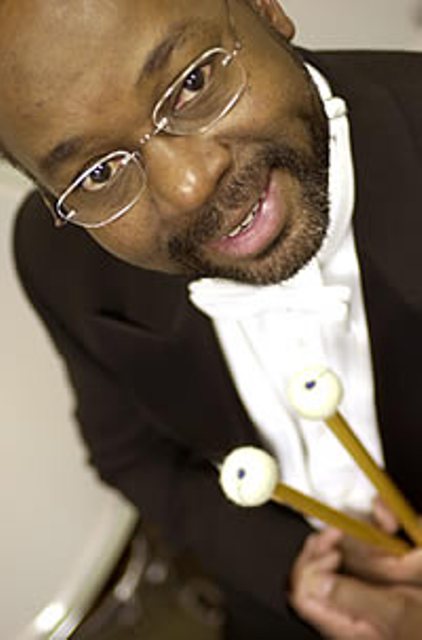
Review
in “Percussive Notes”
The Journal of the Percussive Arts Society

In
the year 2000 a timpani wave was started by Jim Brown, Principal Timpanist
of the Savannah Symphony Orchestra and composer Russell Peck. I am speaking
of “Harmonic Rhythm,” a concerto for timpani and orchestra
performed by 39 orchestras.
The
concerto opens with a crescendoed low-D roll, which leads into a massive
statement by the orchestra, setting the stage for what is to follow
– much like a curtain opening for a play. There are four sections to
the composition: Section I is melodic and centers around the development
of the melodic material. Section II is quite rhythmic and climaxes in
a technical display of three-mallet playing. Section III is slow and
uses such effects as dead strokes, brushes and wood mallets. Section
IV returns to a more rapid rhythmic display with a brief harmonic quasi
cadenza that leads to a dramatic ending.
The concerto is written for four standard pedal drums plus a piccolo drum that may be the hand-tuned type. Besides the orchestration there is a piano reduction that would be perfect for a percussion recital.
“Harmonic Rhythm” represents not only the rhythmic and dynamic qualities of timpani but also their melodic qualities. Peck understands the instrument both for its potential and its limits. I can’t help but think that Jim Brown helped a bit here. From the opening roll to the thundering ending, Peck challenges the player musically and technically and has composed a concerto with rewards for the performer and audience.
-John H. Beck
Reprinted by permission of the Percussive Arts Society, Inc., 701 NW Ferris Ave., Lawton, OK 73507-5442
A special thank you to the late Jim Brown, timpanist with the Savannah Symphony, who first spoke to Russell about writing a timpani concerto. Jim contacted many of his fellow timpani colleagues across the country who conveyed their enthusiasm for the project, and with their orchestras performed the concerto as members of the commissioning consortium. Our thanks to Jim for his inspiration, enthusiasm and musicianship.
The following is a list of the orchestras that commissioned Harmonic Rhythm:

| To purchase this contact: Steve Weiss Music (215) 659-0100 Eble Music Co. (319) 338-0313 www.eble.com For more information about Harmonic Rhythm under the SYMPHONIC MUSIC/CONCERTOS listing, click here Percussive Arts Society review LISTEN to audio samples: |
Excerpt of timpani concerto with full orchestra performed by Orquestra Filarmónica de Bogotá Cond. Eduardo Carrizosa Solist Willian León Auditorio León de Greiff Nov/2011:
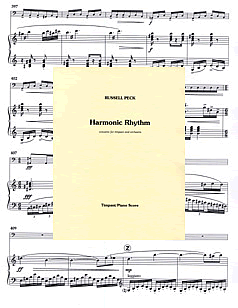
Three movements of Harmonic Rhythm with timpani and piano accompaniment, performed by Momoe Sakurai, accompanied by Jennifer Duerden:
Harmonic Rhythm by Russell Peck I. Andante Maestoso II. Allegro Marziale IV. Allegro Scherzando Accompanied by Jennifer Duerden
Instrument Demonstration Piece for Narrator and Orchestra

Living up to its title, The Thrill of the Orchestra colorfully illustrates the instruments and how they are played. Suitable for all audiences, young and adult.
Frequently performed and repeated by many major American and foreign orchestras (Pittsburgh, Atlanta, Montreal, Royal Philharmonic, etc.) and more than 100 regional and other orchestras across the United States, “The Thrill” is a contemporary classic of the educational genre.
Translations available in German, French, and Spanish. “The Thrill” has also been performed in Cantonese, Korean, Hebrew, Portuguese and Japanese.
“always knocks the socks off the audience” Symphony Magazine
“a great advertisement for classical music . . . intersperses music with vivacious narration” Island Packet
“fresh, tuneful . . . rhythmically engaging, deftly orchestrated . . . Peck deserves a special bravo” New Jersey Star-Ledger
duration: 13′
(1985)
3(3rd db. picc.)/2+E.h./2+b.cl./2+cbn. 4/3/3/1
timp. 3 perc. strings
narrator
[The full-size orchestra may be reduced by the omission of any or all of the following instruments: fl. III, E.h., b.cl., cbn., tpt. III, perc. III. Cues for these instruments are provided in other parts
A chamber orchestra version (using different score & parts) has instrumentation as follows: 2/2/2/2 2/2/1/1 (tbn. & tuba are optional)
timp. 1 perc. (or timp./perc. 1 player) strings
narrator
for orchestra (with drum set)

Revolutionary Action is a short, high-energy rock-music piece based on the first section of Jack and Jill at Bunker Hill. The latter piece (with narration) can be heard on The Thrill of the Orchestra CD, which is available at iTunes and CD Baby.
duration: 4′
(1995)
3(3rd db. picc.)/2+E.h./2+b.cl./2+cbn. 4/3/3/1
timp. 2 perc. (incl. drumset) harp strings
[The orchestra may be reduced by the omission of any or all of the following instruments: fl. II, E.h., b.cl., cbn., tpt. III, harp. Cues for these instruments are provided in other parts.]
Recordings: introduction to Jack and Jill at Bunker Hill
two pieces for orchestra (can be played separately or as a two-movement suite)

“brimming with life . . .”
Greensboro News and
Record
“a wonderful and fun piece!”
JoAnn Falletta
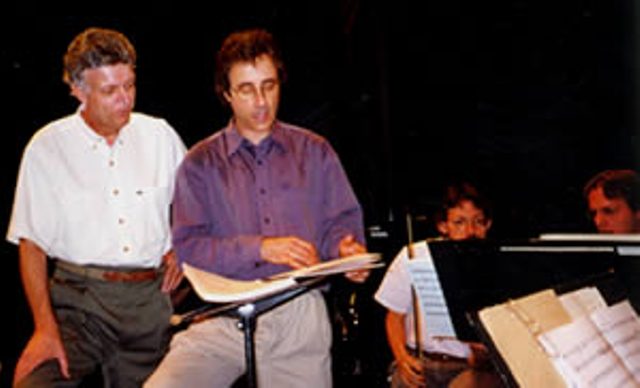
“He was like a contemporary Ravel, treating popular music with a classical hand garbed in extremely precise, colorful and sparkling orchestration.” Paul Polivnick, Conductor
OUT OF THE BLUE 8’45”
Openly nostalgic with many style elements of traditional blues and Americana, this piece recalls a lazy afternoon on the prairie. Out of the Blue is a moderately paced intermezzo. The beginning has a wistful quality which opens up to a heartfelt recollection of simpler times. Out of the Blue captures a certain spirit of The American Dream and ends with a something that feels like a wide-open sky.
Out of the Blue may be performed without
Flute III/piccolo, Oboe II, E-flat Clarinet, and Contrabassoon Cues are provided in other instruments.
Note: if the oboe section has only two players, the second player doubles, playing English horn in Out of the Blue, and Oboe II in Flying on Instruments.
FLYING ON INSTRUMENTS 4’45”
Ecstatic happiness radiates from this jazz-influenced piece. Allegro vivace throughout, Flying on Instruments draws upon everything from Latin rhythms to gospel music. Massed strings and other sections featured as group soloists.
total duration: 13’30”
(1997)
3(3rd db. picc.)/2+E.h./2+E-flat/2+cbn. 4/3/3/1
timp. 3 perc. strings
Instrumentation may be reduced:
Flying on Instruments may be performed without English Horn and Contrabassoon. Cues are provided in other instruments.
Note: if the oboe section has only two players, the second player doubles, playing English horn in Out of the Blue, and Oboe II in Flying on Instruments.

“A stunning all-American blend of Broadway, chimes, brass band and the National Anthem, showcasing every part of the orchestra in three minutes time.”
The Evansville Courier
Duration 3 minutes
(1995)
2+picc./2/2+b.cl./2 4/3/3/1
timp. 2 perc. strings
[Bass clar. is optional;
cues are provided in other parts.

